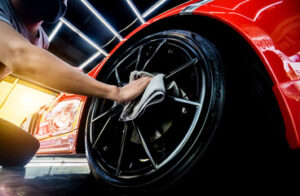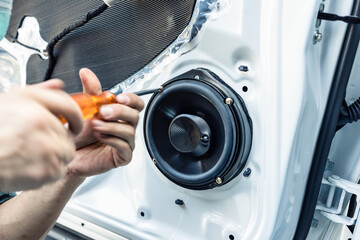Car detailing is a professional process that revitalizes your vehicle’s exterior and interior. Using a combination of processes, detailing removes blemishes from paint, chrome, and trim.

The wheels of your car collect the most dirt, brake dust, and road grime. A full service detail will completely restore your wheels and remove tough stains. It will also polish the wheels and tires to a high shine.
The wheels of your car are a crucial part of your vehicle’s appearance. They can give your car a unique look and help you personalize it. They come in a wide array of colors, sizes, and styles to suit your needs.
Wheels are typically made from two basic components: the rim and the hub. The rim is usually comprised of aluminum or other metals. The hub is the central portion of the wheel that attaches to the axle and holds the brake rotors. The rim is often made of chrome or another metallic finish to complement the overall aesthetic of the vehicle.
Choosing the right style for your wheels is important to ensure that you get the best fitment and performance. This includes things like the correct diameter, width, and offset. You also need to consider backspacing—the distance between the hub and the outer surface of the wheel.
Once you’ve found the perfect wheels for your vehicle, you need to take care of them properly so they look their best. The first thing you need to do is ensure that they’re in good shape and free of damage.
After you’ve cleaned your wheels, make sure to apply a coat of tire dressing. This will keep your tires looking their best and protect them from road grime and other environmental contaminants. You’ll want to apply this coating at least once, but if you want a brilliant shine, apply it twice!
You should also use the proper type of wax for your wheel style. Synthetic waxes are designed to withstand the heat and exposure of driving, and they’ll last longer than natural ones.
Alloy wheels are also an option for many vehicle owners, but they’re typically more expensive than steel rims and are less durable. They come in a variety of different designs and finishes and can be made from aluminum or other metals.
If you’re considering getting an upgrade or a new set of wheels, it’s a good idea to consult with your mechanic and discuss the different options available to you. You should also choose the style that best fits your vehicle’s design and functionality.
The inside of your car is where you live, work, and spend a lot of time. Keeping it clean will make your drive much more comfortable and pleasant. However, it can be difficult to keep the interior of your vehicle clean, so you may want to look for a professional detailer.
A detailer will vacuum the entire interior of the car, including carpets and mats, headliners, trunk area, and seats. They will also steam-clean the carpets and seats to remove tough stains. They will then apply a deodorizer and protect the interior with wax or polish.
Many auto professionals offer this service. The prices of these services vary, so you should shop around for the best deal.
You can expect to pay a reasonable amount for a basic interior detail, but you might have to pay more if you want a premium package that includes additional features. Some add-ons include upholstery, dashboard repairs, and other services.
Increased driving safety: When the windshield, windows, and side mirrors are dirty or covered with debris, it can make it difficult to see your surroundings while you’re on the road. This can affect your safety, and it’s important to clean them regularly.
Stains: Your vehicle is a home for many different stains. From spills to rust, these stains can be a source of irritation. You can prevent these stains by detailing your vehicle on a regular basis.
Improved air quality: dirty air can cause allergies, breathing problems, and other health issues. Having your car detailed on a regular basis will improve the air quality inside the vehicle and keep you and your passengers healthy.
Prevent sun damage: Your car’s interior can be damaged by UV rays, especially if your windows aren’t tinted. Having your interior professionally detailed will ensure that the upholstery is protected from harmful UV rays, which can cause long-term damage to the fabric.
When looking for a detailer, you should make sure that they use quality cleaning products and have experience in the industry. They should also be able to provide you with a warranty on their work. This will help you feel more confident in their abilities and trust them with the interior of your vehicle.
